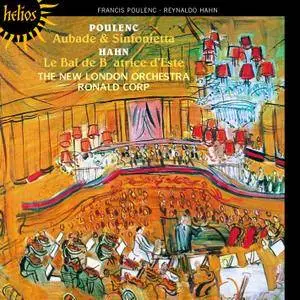Poulenc: Aubade & Sinfonietta; Hahn: Le Bal de Béatrice d'Este (1989) [Reissue 2004]
New London Orchestra, Ronald Corp (conductor); Julian Evans (piano)
EAC | FLAC | Image (Cue&Log) ~ 222 Mb | Mp3 (CBR320) ~ 148 Mb | Artwork included
Genre: Classical | Label: Hyperion (Helios) | # CDH55167 | Time: 01:04:12
New London Orchestra, Ronald Corp (conductor); Julian Evans (piano)
EAC | FLAC | Image (Cue&Log) ~ 222 Mb | Mp3 (CBR320) ~ 148 Mb | Artwork included
Genre: Classical | Label: Hyperion (Helios) | # CDH55167 | Time: 01:04:12
The pairing of Francis Poulenc and Reynaldo Hahn on this album may seem contrived merely because of biographical parallels between the two men, for their musical approaches and styles are quite different, if not at odds. Poulenc's neo-Classical, self-conscious parodies in the Sinfonietta and the dry, sarcastic wit of the Aubade are a world away from Hahn's pretty, even precious, Romanticism, which is unabashedly on display in La bal de Béatrice d'Este. However, the discerning listener may find in Poulenc streaks of Hahn's pensiveness and languor, which his comic antics never completely conceal; there is in Hahn a buoyant, diatonic tunefulness that is readily found in Poulenc. (Interestingly, some of Poulenc's adaptations of Renaissance music bear a remarkable similarity to Hahn's antique pastiches in this ballet.) Furthermore, their fondness for unusual chamber combinations is striking, and the transition from the Aubade to La bal de Béatrice d'Este is not at all jarring because they both share the charm and ambience of the salon orchestra.



